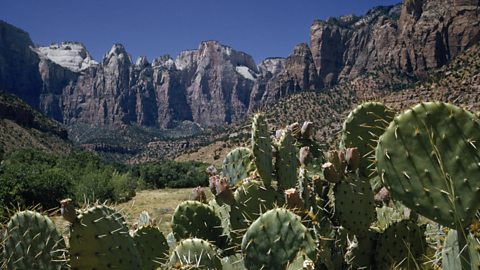Hot derest ecosystem
Conditions and plant adaptions
Desert soils are thin, sandy, rocky and generally grey in colour. Desert soils are very dry. When it does rain they soak up the water very quickly.
The surface of the soil may appear crusty. This is due to the lack of rainfall. As it is so hot water is drawn up to the surface of the soil by evaporation. As the water evaporates, salts are left behind on the surface of the soil.
Plants with adaptations which allow them to live in hot and dry conditions are called xerophytic. This means they have adapted to live in hot and dry environments.
One example is cactus plants:
- thick, waxy skin to reduce loss of water and to reflect heat
- large, fleshy stems to store water
- thorns and thin, spiky spines or glossy leaves to reduce water loss
- spikes protect cacti from animals wishing to use stored water
- deep roots to tap groundwater
- long shallow roots which spread over a wide area
- plants lie dormant for years until rain falls

Image caption, Cactuses
Many cactuses have spines rather than leaves to reduce water loss.
Image caption, Succulents
Succulents store water in their stems.
Image caption, Tap roots
Many desert plants have long tap roots to reach water deep beneath the ground.
1 of 3